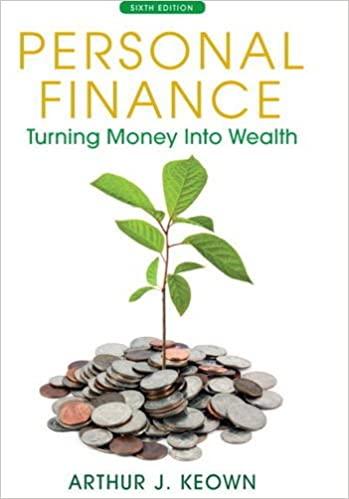Question
1) An appliance manufacturer produces two models of microwave ovens: H and W. Both models require fabrication and assembly work; each H uses four hours
1) An appliance manufacturer produces two models of microwave ovens: H and W. Both models require fabrication and assembly work; each H uses four hours of fabrication and two hours of assembly, and each W uses two hours of fabrication and six hours of assembly. There are 600 fabrication hours available this week and 480 hours of assembly. Each H contributes $40 to profits, and each W contributes $30 to profits. What quantities of H and W will maximize profits?
a)Use the objective function approach.
b)Use the enumeration approach.
2)A small firm makes three similar products, which all follow the same three-step process, consisting of milling, inspection, and drilling. Product A requires 12 minutes of milling, 5 minutes for inspection, and 10 minutes of drilling per unit; product B requires 10 minutes of milling, 4 minutes for inspection, and 8 minutes of drilling per unit; and product C requires 8 minutes of milling, 4 minutes for inspection, and 16 minutes of drilling. The department has 20 hours available during the next period for milling, 15 hours for inspection, and 24 hours for drilling. Product A contributes $2.40 per unit to profit, product B contributes $2.50 per unit, and product C contributes $3.00 per unit. Determine the optimal mix of products in terms of maximizing contribution to profits for the period. Then, find the range of optimality for the profit coefficient of each variable.
3) A toy manufacturer currently has two warehouses (1 and 2) that are operational and meet the demand of backyard play sets at three retail outlets A, B and C. The supply of the play sets at warehouse 1 and 2 are 500 and 400 units respectively. The demand of play sets at warehouses A, B and C are 400, 600, and 350 units respectively. The unit cost of transportation from warehouse 1 and 2 to retail outlets A, B and C are shown in the table below. The toy manufacturer wants to open a third warehouse which will have a supply of 500 units of backyard play sets per week. Two locations, N1 and N2, are being considered for the new warehouse. Transportation costs from location N1 to stores A, B, and C are $6, $8, and $7 per unit, respectively; from location N2, the costs are $10, $6, and $4, respectively. Which of the two locations is the preferred location for the new warehouse? Hint: You will have to model and solve two LP transportation problems.
|
| Retail Outlet A | Retail Outlet B | Retail Outlet C |
| Warehouse 1 | 8 | 3 | 7 |
| Warehouse 2 | 5 | 10 | 9 |
Step by Step Solution
There are 3 Steps involved in it
Step: 1

Get Instant Access to Expert-Tailored Solutions
See step-by-step solutions with expert insights and AI powered tools for academic success
Step: 2

Step: 3

Ace Your Homework with AI
Get the answers you need in no time with our AI-driven, step-by-step assistance
Get Started


